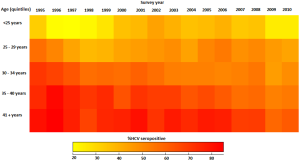Update August 7 2020
The gene symbol renaming is now official. Here’s the publication (not open access, should be), coverage at The Verge and more coverage at The Register. The latter with quotes from me.
It’s been 3 years since we last visited that old favourite recurring topic, data corruption by Excel. Specifically, the unwanted auto-conversion of identifiers that look like dates, e.g. SEPT1, to – well, dates.
Here’s a new twist – well, a two year-old twist in fact, as I don’t keep up to date with this field any longer:
Yes, in 2017 the HGNC decided that the solution to this long-standing issue is to rename the offending genes to prevent the auto-conversion. I’m yet to determine whether anything more came of the proposal.
It is I suppose a practical suggestion that will work. The newsletter states that:
Our initial consultation with the research community publishing on these genes had very mixed results
I bet it did. However, given that ongoing consultation with the research community about the inappropriate use of software has had essentially no results in 15+ years, perhaps it is the most effective solution to the problem.
